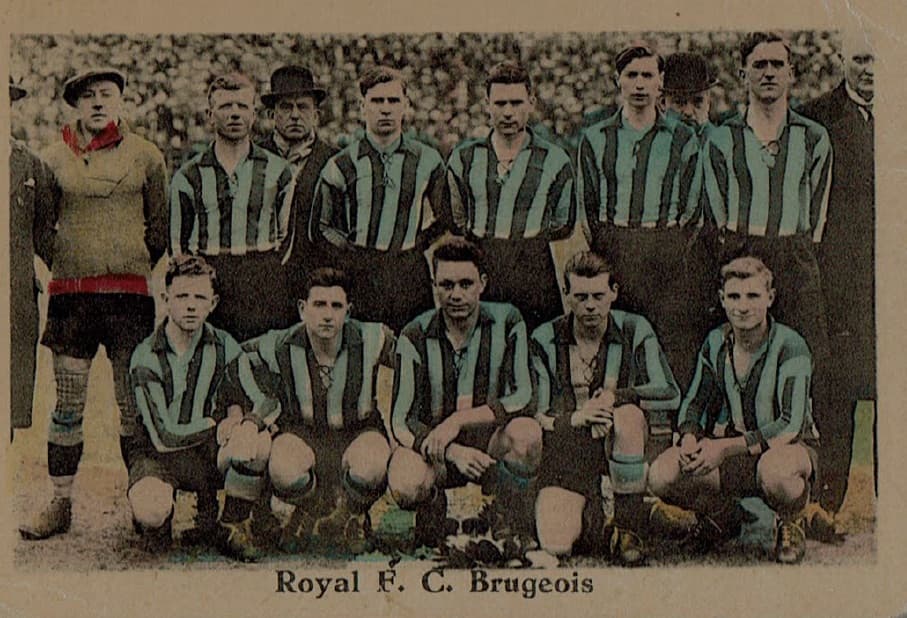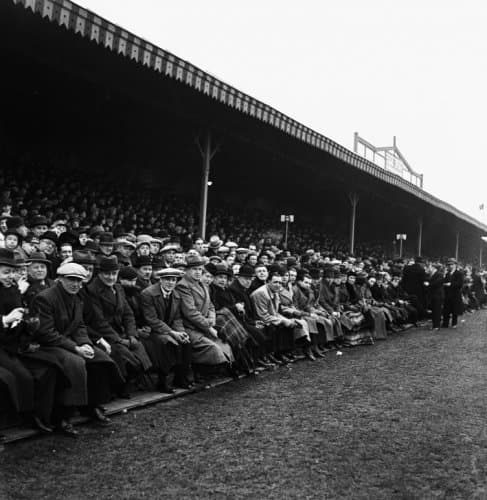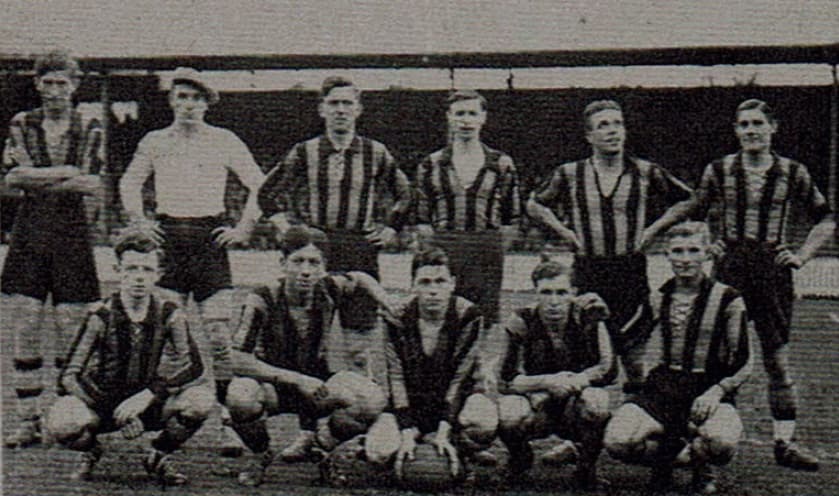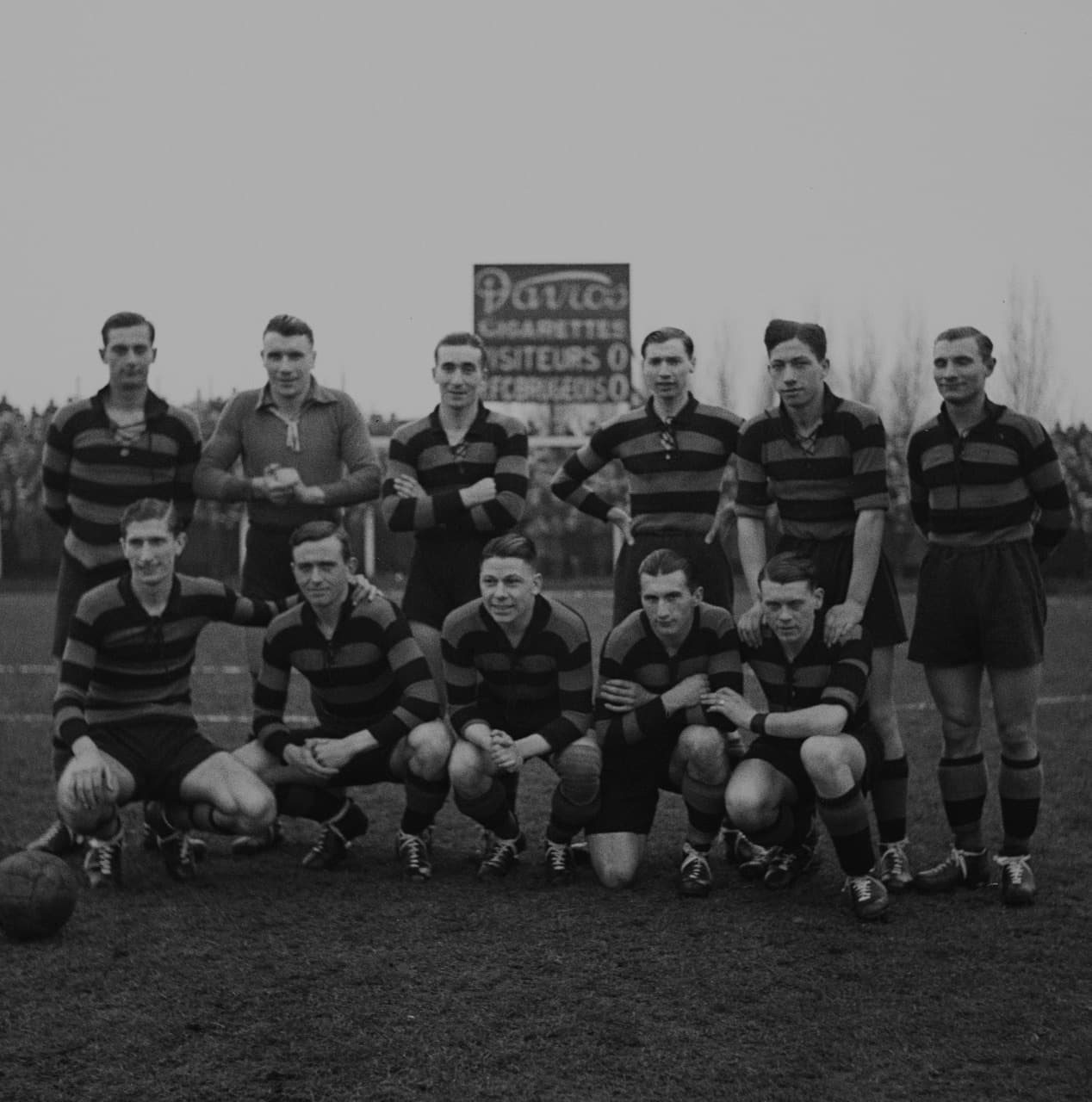Professionalization and modernization
1930 - 1939

During the very first World Cup in 1930 in Uruguay, three Club players travel with the Belgian squad to Uruguay. In 1935, Club becomes more professional. The players receive a salary for the first time and medical support is introduced. There is also, for the first time, a foreign coach: Karl Schrenk. The transfer system is introduced and bonuses are now given per goal. Club thus lays the foundation for a modern football club, which also cares for good causes and plays a charity match for the victims of a major mining disaster.
1930
Three Club men to the very first World Cup
On the Conte Verde, the ship that takes the Belgian delegation to faraway Uruguay, there are three Club players. Club icon Hector Goetinck is the national coach. He brings Club players Louis Versyp and Gérard Delbeke with him.
1930
Club wins 3-12 at Standard, the biggest away win so far
On December 28, 1930, Club wins 3-12 at Standard’s ground. Emiel Van den Berghe scores at least five goals. This record is matched in May 2004 when Club wins 0-9 at RAEC Mons, including a hat-trick by Gert Verheyen.
1934
Club Brugge also supports charity
In May 1934, a major mining disaster occurred in Pâturages, Hainaut, costing dozens of lives. On July 13, 1934, the veterans of Club and Cercle played a charity match for the victims. This shows that FCB was already early on attentive to charity and social welfare.
Players were required to train once a week and received 25 Belgian francs for it.

1935
Professionalization (first paid players)
Royal Football Club Brugeois becomes a professional club. There is a distinction between amateurs, who play for honor and their colors, and independents, who are paid to play football alongside their jobs. In First Division, Club players now receive 25 Belgian francs for a loss, 60 Belgian francs for a draw, and 100 Belgian francs for a win. Players are required to train once a week and receive 25 Belgian francs for it. Club also offers better medical support. At the start of the season, all players receive a medical check-up.

1936
First foreign professional coach (Karl Schrenk) & introduction of transfer system and goal bonuses
Club Brugge started the 1936-1937 season for the first time with a paid foreign coach: the Austrian Karl Schrenk. Previously, there was Mr. Tripp, but he was not paid as a professional. In previous years, former players Hector Goetinck, Gérard Delbeke, and Arthur Volckaert led the team. The Austrian was supposed to teach the Club players more teamwork. He received a contract for one season with a monthly salary of 2,300 Belgian francs.
From 1936-37, the transfer system was also introduced. Goal bonuses were also paid out. New payments: per training 40 Belgian francs, per match (win, loss, or draw) 60 Belgian francs, first goal 15 Belgian francs, second goal 20 Belgian francs, third goal 25 Belgian francs, and 5 Belgian francs per extra goal.
1937
The beginning of three generations of De Clerck chairmen
Emile De Clerck becomes the sixth chairman of Club Brugge. He is the son of Pieter De Clerck, founder of Blikslagerijen De Clerck, which employed many Club players at the time. Emile was succeeded in 1959 by his son André, who in turn passed the torch to Fernand in 1973. Fernand De Clerck remained Club chairman until 1999.
Louis Versyp
A worthy successor to Cambier and Goetinck
With Louis Versyp, Club fans discovered a new crowd favorite. Versyp, a true Bruges native, would be a star at FCB for two decades from the mid-1920s. In the 1940s, he also became coach of Club Brugge.
